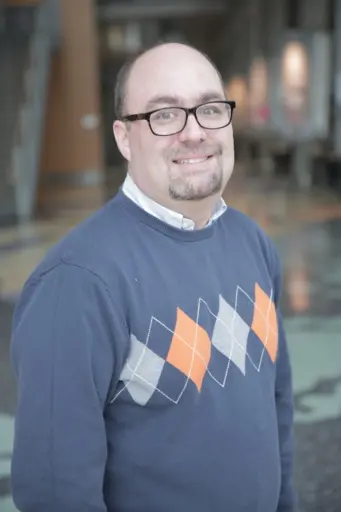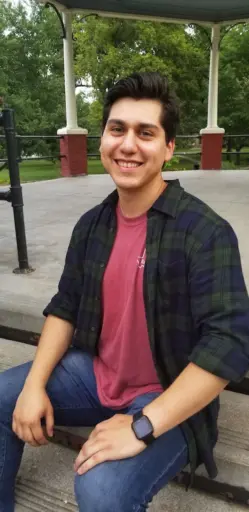Duck into any almost any science building on the UW-Madison campus and you’ll find laboratories stuffed with busy graduate and undergraduate students. While working on research projects is a big part of the experience at Madison, it’s not the case at many small and community colleges, technical schools and even at some larger universities.
 Andrew Greenberg
Andrew Greenberg
That’s one reason for the Research Experiences for Undergraduates in Chemistry and Chemical and Biological Engineering program. Each summer, a group of diverse, highly qualified college sophomores and juniors visit campus to work full-time in a lab for 10 weeks while also attending professional development and STEM seminars. At the end of the session, students present posters based on their research similar to the way graduate students often present their research at conferences.
The goal is to help the students, about 70 percent of whom come from small, non-research institutions, understand what life in the lab is really like before they decide whether to pursue graduate education. More than 80 percent of students selected for the program—which usually has between 500 to 700 applicants from across the United States, including Puerto Rico, for 30-40 spots—do go on to graduate school, with about 10 to 20 percent of attendees choosing UW-Madison.
In summer 2020, however, the program made some big changes to pivot to distance education, including combining programs to become the Integrated Chemistry, Chemical Engineering, and Materials Research Experience.
“What we decided to do was focus on professional development and community building, as well as giving them research skills through group research projects,” says Andrew Greenberg, distinguished faculty associate in the Department of Chemical and Biological Engineering and the director of the REU. “We made a commitment to them and while we felt like we couldn’t give them the full program, we wanted to provide some sort of training for them that will help them in their careers.”
 Jorge Elvis Umana. Photo: Elizabeth Brungardt.
Jorge Elvis Umana. Photo: Elizabeth Brungardt.
Students joined one of three NSF-sponsored centers on campus, including the Materials Research Science and Engineering Center, Engineering Research Center for Cell Manufacturing Technologies, and the Center for Sustainable Nanotechnology. Each track was facilitated by a graduate student who coordinated the research activities under the mentorship of an experienced faculty member.
Greenberg and his team also significantly increased the professional development curriculum, covering topics including how to read scientific literature, writing NSF fellowship applications, how to look for grad schools, conducting library research and how to undertake cross-cultural mentoring. On Tuesdays, the students gathered virtually to listen to faculty give talks on their research to expose them to the breadth and depth of research taking place on the UW-Madison campus.
Greenberg hopes the distance REU experience, which concluded in late July 2020, was valuable for the participants. He and his team plans to use what they learned in 2020 for a second distance REU scheduled to take place in the summer of 2021.
While he understands that it can’t completely replace time spent in an actual research laboratory, Greenberg hopes participants have gained some new skills from the experience.
“In terms of professional development, the REU program was incredibly helpful,” says Jorge Elvis Umana, a senior at the University of Kansas studying chemistry. Umana says the REU seminars have helped him immensely as he begins applying to graduate schools. “Overall, the experience went beyond my expectations and I enjoyed nearly every moment of the REU.”
Funding for the REU program come from the UW-Madison Graduate School, the NSF funded Materials Research Science and Engineering Center, the NSF funded Center for Cell Manufacturing Technologies, and the DOE supported Great Lakes Bioenergy Center.